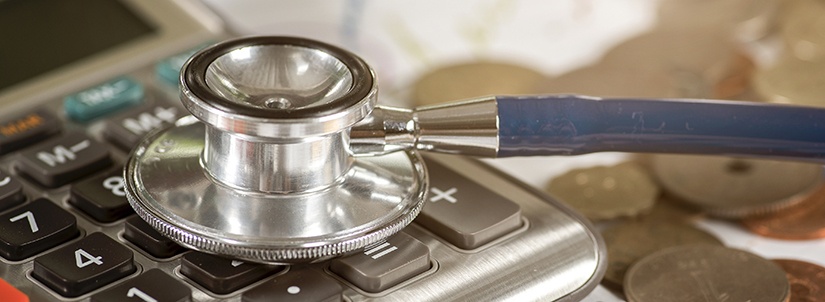
Many medical and dental practice owners were surprised to find their offices closed by statewide shutdown orders preventing non-essential medical and dental services. Even as states reopen elective healthcare, practices may find a drastically different market for services. That demand uncertainty for medical and dental services, coupled with the threat of future intermittent care stoppages, makes this a good time for physicians and dentists to focus on boosting their practice’s cash flows in order to better prepare for the short- and long-term future of healthcare during a pandemic:
Telehealth
Telehealth is a great ancillary service to add to your practice. More than ever, it should be incorporated to boost your practice’s revenue stream.
Centers for Medicare & Medicaid Services (CMS) has issued temporary measures to facilitate the use of telehealth services during the COVID-19 Public Health Emergency. Included in these changes is the ability to bill for telehealth services as if they were provided in person. Another temporary change allows providers to deliver care to both established and new patients through telehealth.
In addition, CMS has also expanded the list of covered telehealth services that can be provided in Medicare through telehealth.
Providers may provide telehealth services to patients through commonly used apps that normally would not fully comply with HIPAA rules. Some of the more popular examples of these apps include FaceTime, Zoom, or Skype. However, the platforms should not be public-facing, such as Facebook Live.
Healthcare providers may also reduce or waive cost-sharing for telehealth visits during the COVID-19 Public Health Emergency.
Coverage for telehealth services may differ throughout the various commercial payors as well as from state to state.
Chronic Care Management
The popularity of Chronic Care Management (CCM) services has been increasing in recent years, especially as providers are realizing that they may bill for services they would regularly provide free of charge.
Chronic Care Management is defined as the non-face-to-face services provided to Medicare beneficiaries who have multiple (two or more), significant chronic conditions. Rather than being exclusive to physicians, other clinicians, such as Nurse Practitioners and Physician’s Assistants, may also provide CCM services; however only one clinician can furnish and bill for any particular patient during a calendar month.
The practice must have the patient’s written or oral consent and use a certified EHR to bill CCM codes. The creation and revision of comprehensive electronic care plans is a key component of CCM.
CCM incentivizes a higher standard of care for patients with multiple chronic conditions and offers an additional $42 to $139 per patient per month based on time and complexity.
U.S. Department of Human & Health Services (HHS) Provider Relief Fund
The Provider Relief Fund is provided to support healthcare providers fighting the COVID-19 pandemic. The funding supports healthcare-related lost revenue attributable to COVID-19.
Providers must accept the HHS Terms and Conditions and submit revenue information by June 3, 2020 to be considered for an additional General Allocation payment. All facilities and health care professionals that billed Medicare FFS in 2019 are eligible for the funds. It is important to note that these are grants, not loans.
A physician can estimate his or her payment by dividing 2019 Medicare FFS (not including Medicare Advantage) payments received by $484 billion, and multiplying that ratio by $30 billion.
Paycheck Protection Program Loan Forgiveness
The Paycheck Protection Program (PPP) is a loan designed to provide a direct incentive for small businesses to keep their workers on payroll. The main attractive feature of this program is the ability to have some if not all of the loan proceeds forgiven. Forgiveness is based on the employer maintaining or quickly rehiring employees and maintaining salary levels. If a laid-off employee declines an offer to be re-hired, the forgiveness amount will not be reduced, however it is advised to get written confirmation of the fact.
The forgiveness portion of the loan consists of money used for payroll, rent, mortgage interest, or utilities. A reduction in payroll may reduce the amount that may be forgiven; 75% of the potential forgiveness amount should be used for payroll.
It may be in your best interest to review the PPP Loan Forgiveness Application to help you understand how the forgiveness portion will be calculated. We advise you to review with your accountant and/or legal counsel before submission to the U.S Small Business Administration.
Creative solutions and persistent actions to boost cash flow may help your practice overcome the COVID-19 crisis. Contact a CIG Capital Advisors Business Advisory Services professional to look for ways your practice might be able to increase cash flow amid the pandemic.
Sources
Telehealth
Chronic Care Management
- https://www.acponline.org/system/files/documents/running_practice/payment_coding/medicare/chronic_care_management_toolkit.pdf
- https://phamily.com/ccm/
HHS Provider Relief Fund
Payroll Protection Program
- https://www.sba.gov/sites/default/files/2020-05/3245-0407%20SBA%20Form%203508%20PPP%20Forgiveness%20Application.pdf
- https://www.aicpa.org/content/dam/aicpa/interestareas/privatecompaniespracticesection/qualityservicesdelivery/ussba/downloadabledocuments/coronavirus-ppp-loan-forgiveness-calculation-steps.pdf


